Assemblies
Third Year Undergraduate Studio
City College of New York, Spitzer School of Architecture
Spring 2020
Studio Brief (by Christian Volkmann): In this coming semester we will not design an entire building. We will reverse the method of developing the whole before addressing its parts: This time, we will start with investigating the parts (maybe to develop the whole).
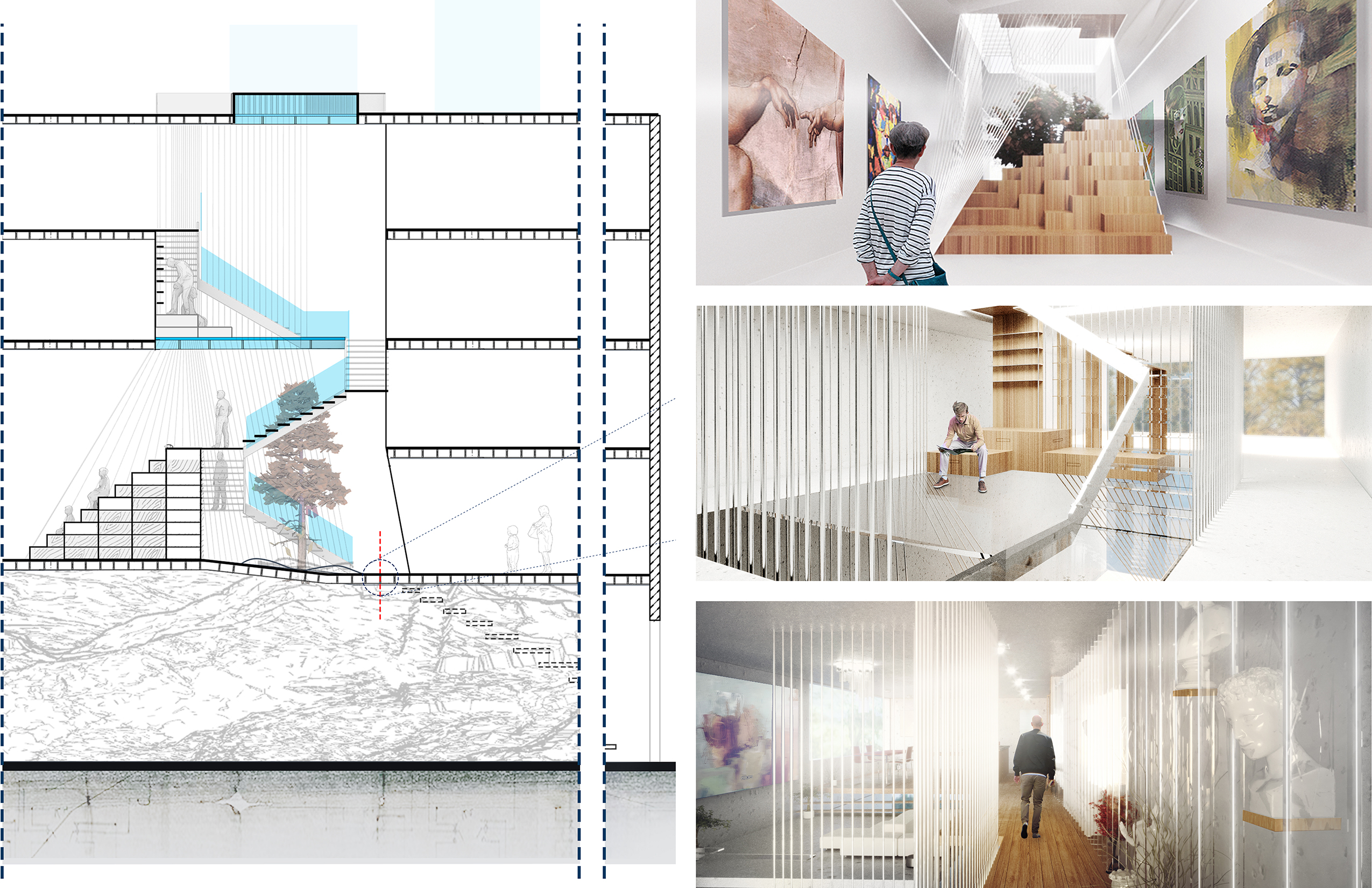
(Problem 1 Work by Ahmed Helal)
We will design interrelated architectural episodes, which investigate the ways we materialize significant assemblies within a building. These episodes are associated with the “domestic”, with how we live + work and how particular spaces and material assemblies respond to requirements of comfort/function and specific tasks. Developing these requirements must consider the method of designing simultaneously in different scales. Assumptions and interpretations of these requirements, and of how “technology” and “technique” are used to serve the design intent, must be approached in a creative and innovative way. The outcome should relate to tangible solutions of material understanding enhancing the intended architectural experience.
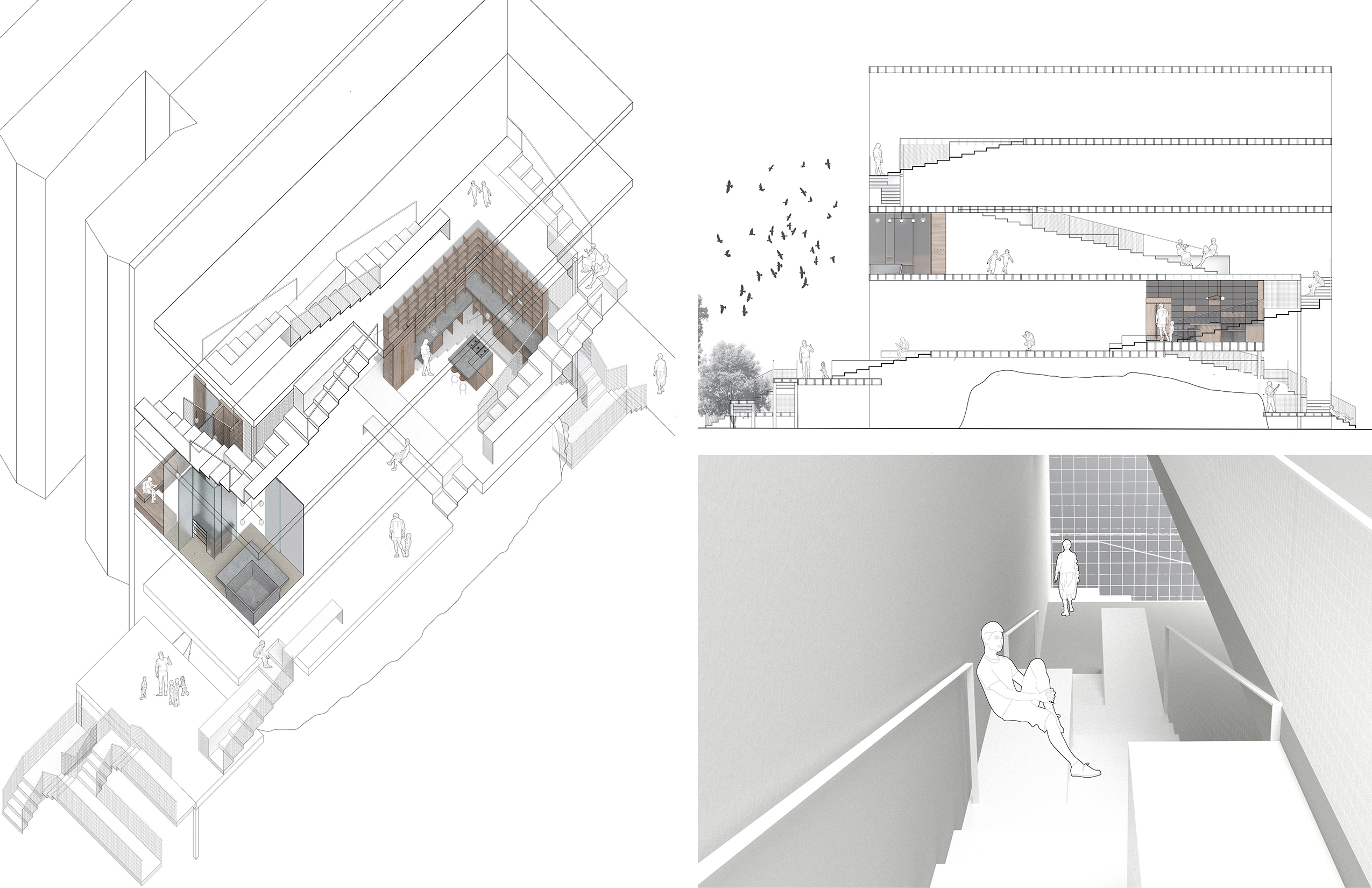
(Problem 1 Work by Violet Nash Greenberg)
For this particular reason we will work in architectural scales that are larger, therefore able to be more detailed and thus capable of expressing materiality and assembly strategies. A specific site will be given to you. This lot might be considered “unbuildable”. However, its provoking fragmentation (due to an embedded outcropping embedded within the northern part of the site) reflects the spirit of the overall approach. You are responsible to discover and negotiate how this lot can be occupied and how to set up a system that can contain your architectural episodes.
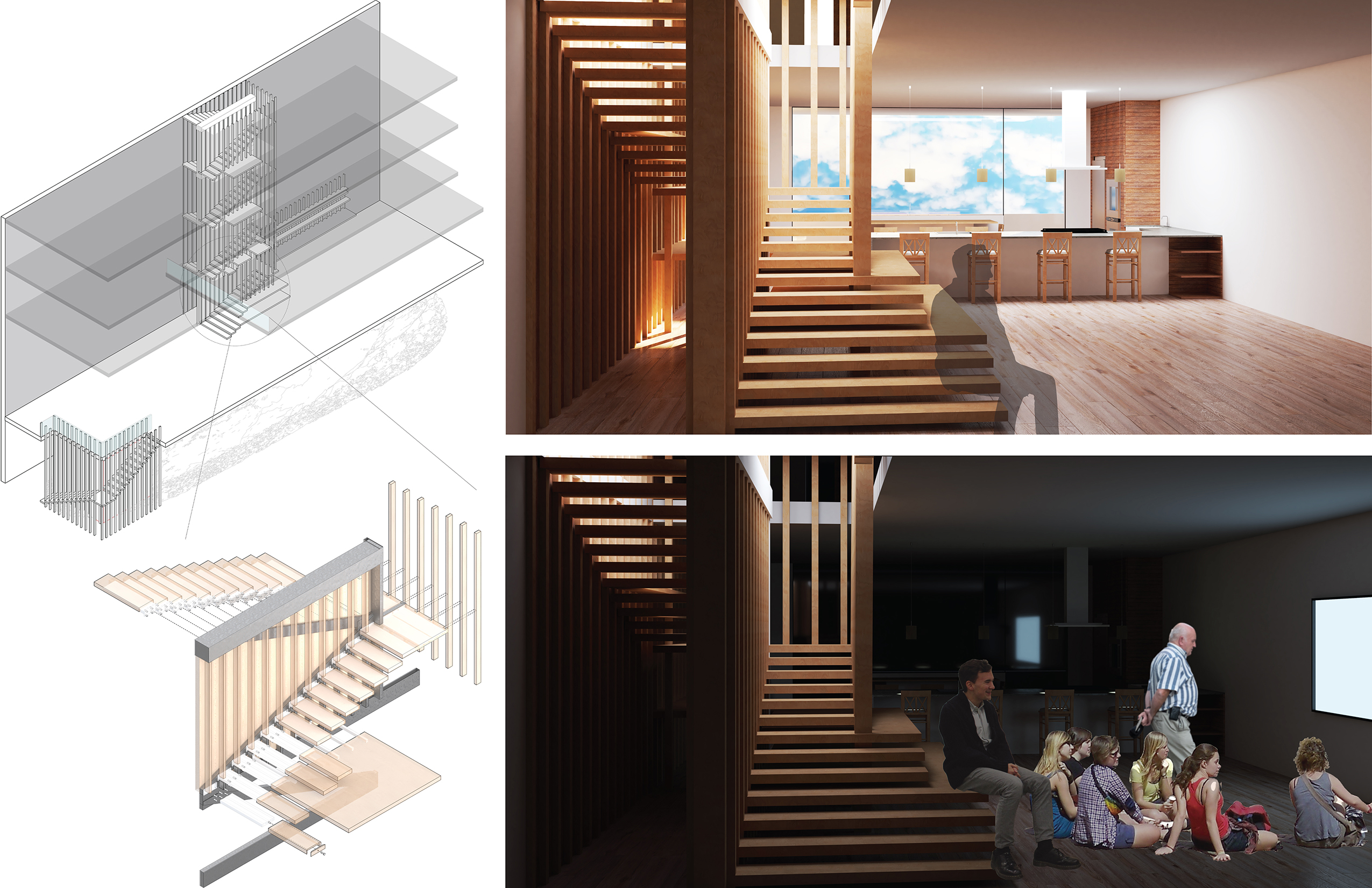
(Problem 1 Work by Christopher Moreno)
Problem 1 - Stair (by Christian Volkmann): Inserting a multi-story stair into that framework has consequences. Any conceptual idea and resulting intervention have to consider the structure that supports it and the space(s) it will create. Especially the limited width has significance for the overall organizational structure and spatial experience. The location and composition of the stair is thus a crucial decision for a succesful parti.
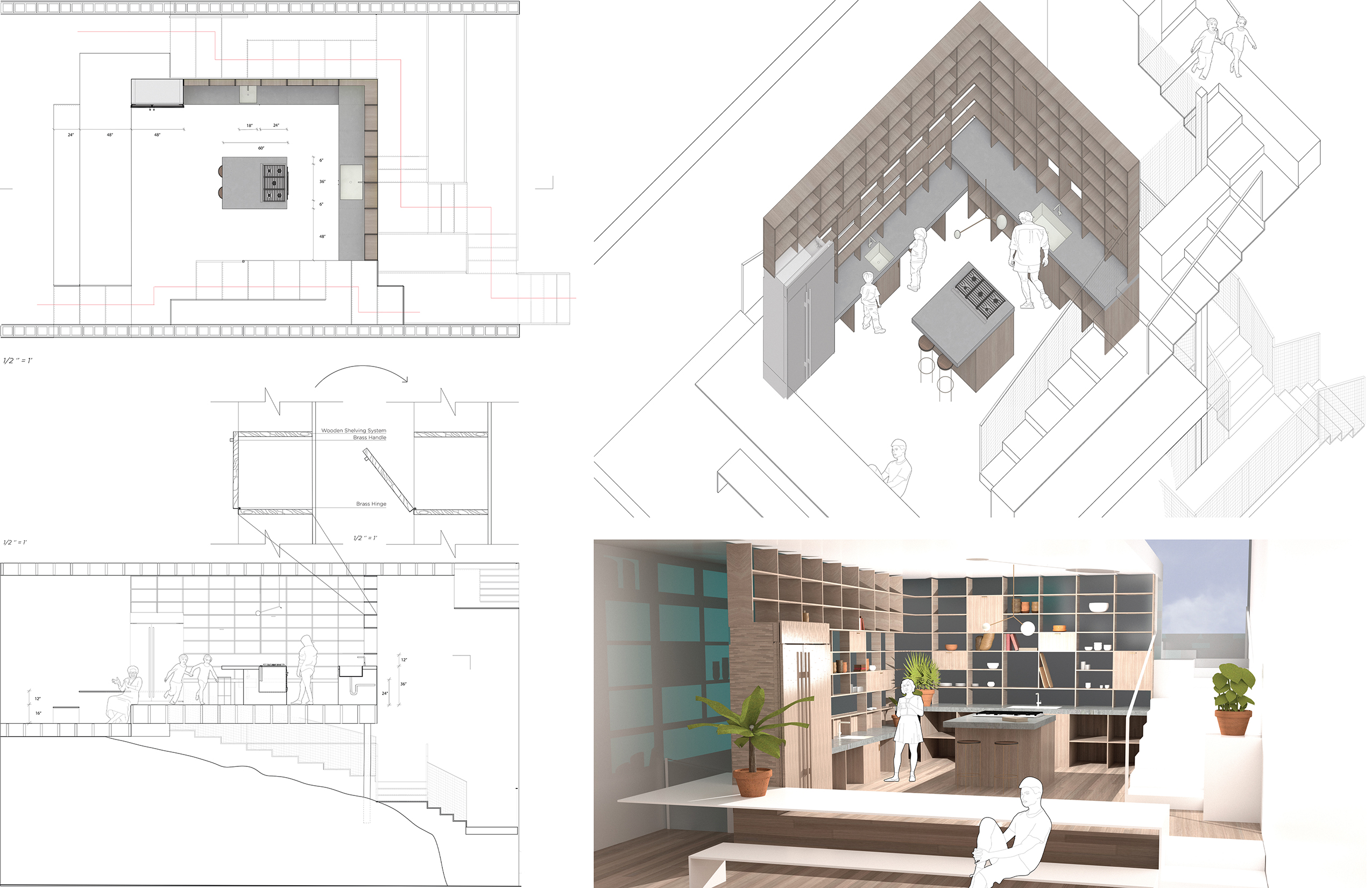
(Problem 2 Work by Violet Nash Greenberg)
We will also work on full-scale investigations of materials and techniques necessary to achieve an effect and architectural experience.It is important to be aware of what architectural scales are suitable to do certain investigations and how to combine them in processing your design (“zoom-in” + “zoom-out”). Instinctively, we comprehend with the ‘human scale’, considering our own body’s relationship to its surrounding. We will therefore always insert scale figures (or parts) into drawings to maintain control.
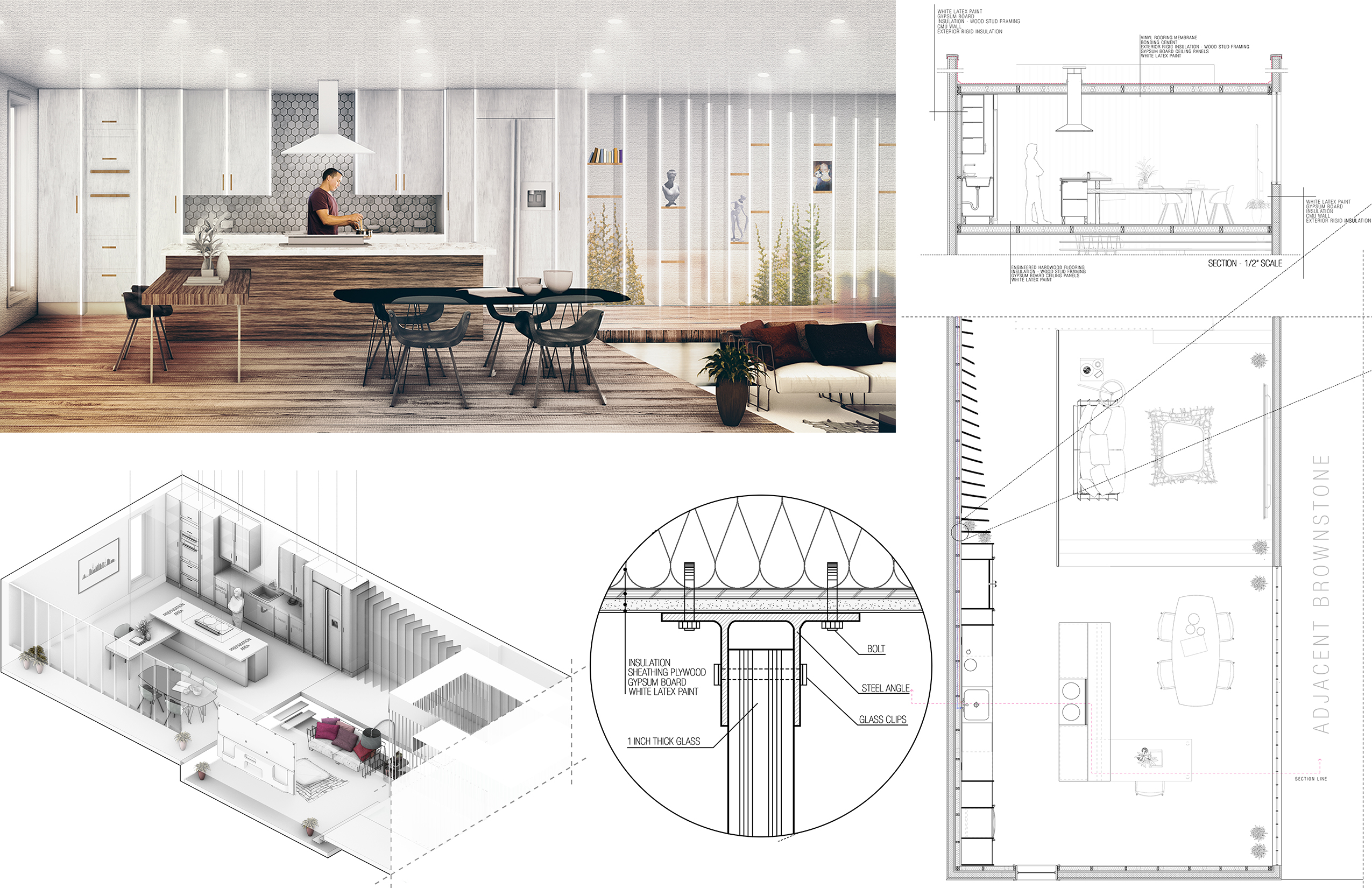
(Problem 2 Work by Ahmed Helal)
Problem 2 - Kitchen (by Christian Volkmann):A kitchen is considered the heart of a building. This is expressed both by the build-up of actions and interactions in this room (- kitchens are known as busy environments -), but also by the extraordinary materials used: The room is often built of extensive amounts of cabinetry, concealing behind it lots of diverse items and functions. Countertops are heavy-duty, due to the extraordinary usage. All functions are organized in an efficient way related to the manifold processes required.

(Problem 2 Work by Angie Montenegro)
The particular materialization sometimes makes this room read like a “house-in-a-house”. The versatility of a modern kitchen creates other technical requirements: It services heat (cooking: cooktop + oven), cold (preserving: refrigerator/freezer), water (cleaning/supply/waste: sink), general power for all appliances and appropriate (task lighting. All of these should be placed in a way that they support and assist efficient cooking conditions.

(Problem 3 Work by Moonjung Jang)
Problem 3 - Bathroom (by Christian Volkmann):A bathroom is a modern amenity for apartment design. You can relax and “rejuvenate” after hard work. Leaving the public zones of the house, you might like to find a space where you can be calm, alone, and wind down for all different kind of reasons. Water plays a significant role. The immediate access to water wasn’t obvious cleansing standard about 100 years ago, when buildings very seldom had the commodity of pressurized pipework to transport water and wastewater.
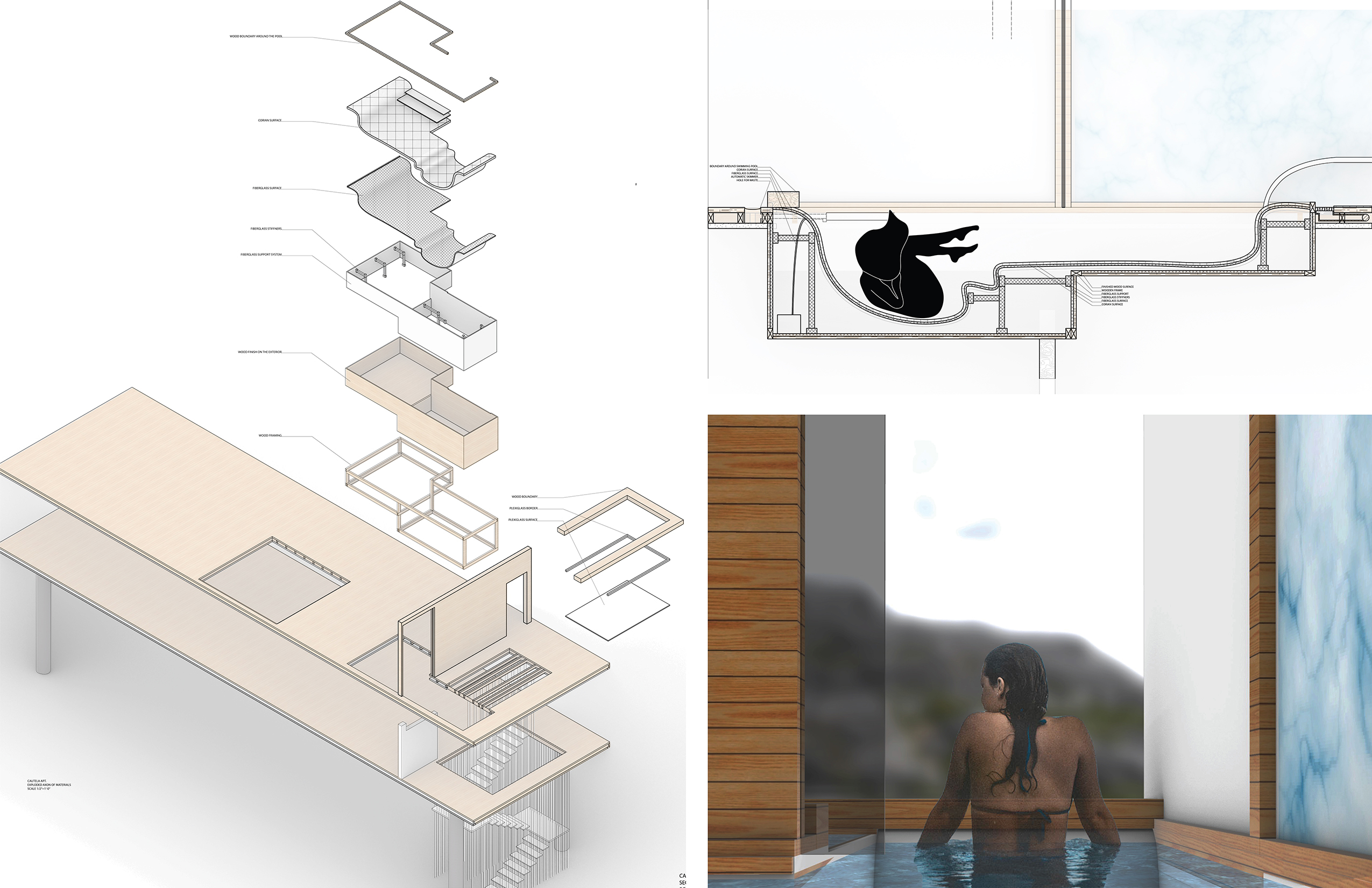
(Problem 3 Work by Violet Angie Montenegro)
Sometimes these circulation systems are ‘surface-mounted’, but most often they are concealed and have a mysterious aspect when experiencing i.e. water just coming out of what was considered a wall. Now the wall is hollow and equipped with various resources. (Circulation comes to you, instead of you circulating to the required fountain, as it once was.) Your bathroom must be organized efficiently and it has to fit into various contexts (structure, circulation, plumbing, electrical/light), related to your stair and kitchen projects.
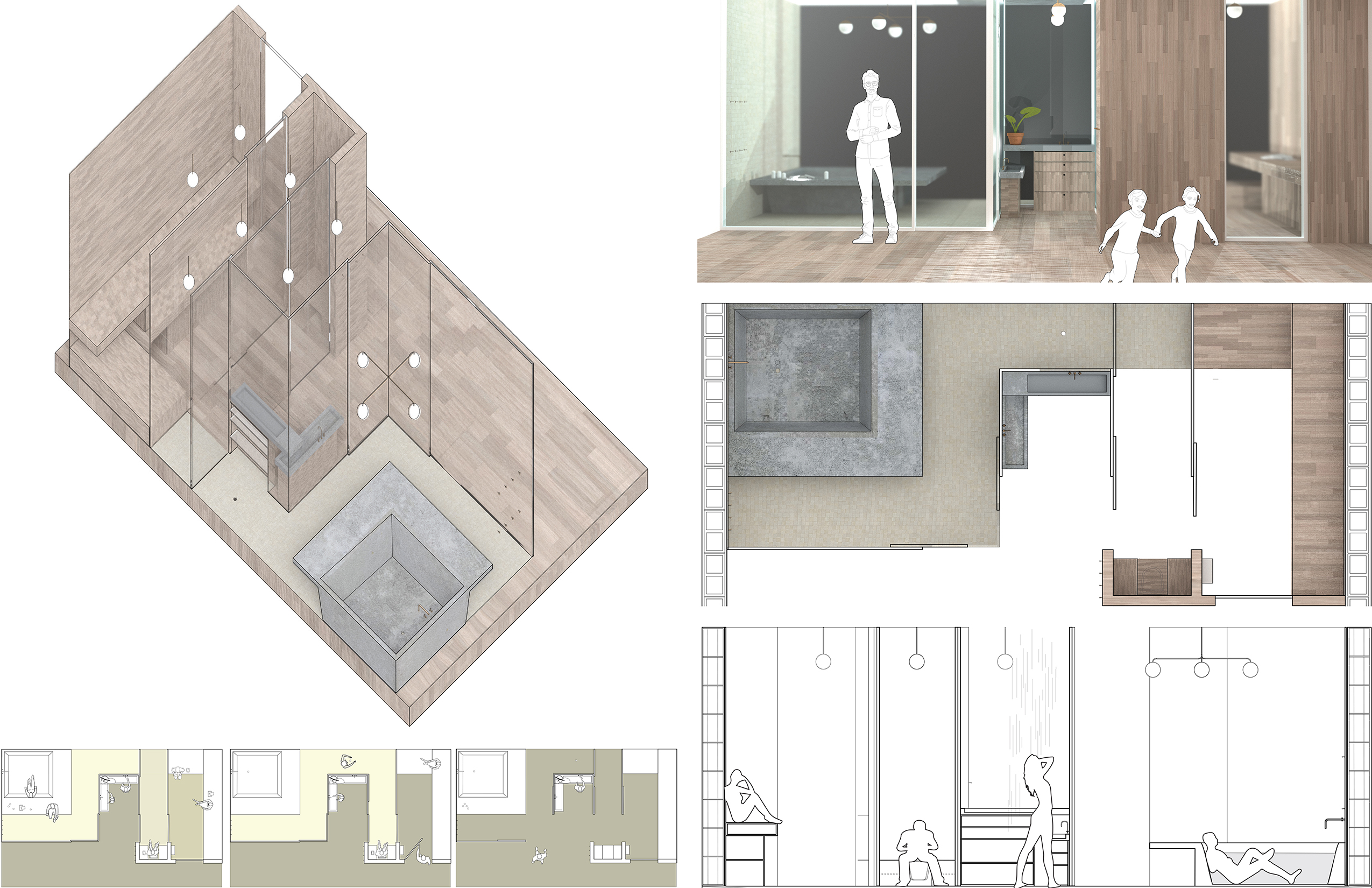
(Problem 3 Work by Violet Nash Greenberg)